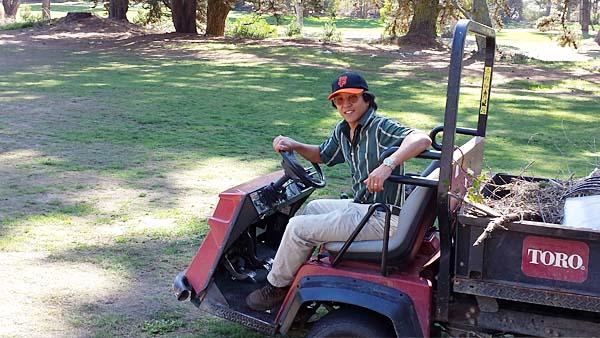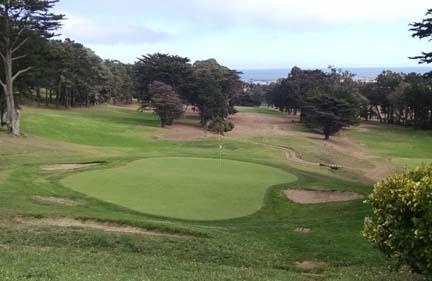 As a campaign advisor in one of the country's most politically charged cities, Tom Hsieh has no shortage of hot-button issues behind which he can cast his support. Instead, Hsieh is a soft touch for many of the city's lost causes.
As a campaign advisor in one of the country's most politically charged cities, Tom Hsieh has no shortage of hot-button issues behind which he can cast his support. Instead, Hsieh is a soft touch for many of the city's lost causes.
A native San Franciscan, Hsieh has led efforts that helped secure financing to rejuvenate institutions that assist the city's underserved, such as Laguna Honda Hospital that supports San Francisco's indigent senior population, the California Academy of Sciences, rundown public schools, libraries and the San Francisco Zoo and Gardens.
"There is a lot of city pride here," said Hsieh, 49. "I'm a local, born and raised, who cares about this city."
Chief among Hsieh's pet projects is ensuring that another of the city's forgotten institutions doesn't fade away.
Recently, Gleneagles Golf Partners, of which Hsieh is the principal, forged a relationship with a local laborers union that he says could take Gleneagles and some of the residents of the surrounding neighborhood out of the doldrums and on a path toward prosperity.
The story is an example of what can happen when a common goal brings otherwise disparate partners together.
As part of this new relationship, the Laborers Community Training Foundation and Northern California District Council of Laborers, Local 261 plan to start a pre-apprenticeship school at neglected Gleneagles that will teach much-needed career skills - in golf course maintenance - to residents of one of the city's most dangerous neighborhoods while at the same time providing the 62-acre layout with a pipeline to cost-effective labor. Although there are many details to be ironed out, Hsieh said he expects the program, which will provide the financially strapped golf course with as many as a half-dozen workers to be paid by the union, to begin within a few months.
"We have two goals: to revitalize the golf course and create a community resource that creates not just jobs, but careers," Hsieh said. "We have high hopes for this program."
So does the union.
"This is a unique partnership that exposes young people to real career paths in construction and landscaping," said Chris Gruwell, president of the public affairs agency known as Platinum Advisors and spokesman for the union.
"We now have a training center in the heart of the neighborhood the Laborer Community and Training Foundation is designed to serve."
If there is any place in San Francisco that could do with a little hope, Gleneagles is it.
Municipal golf in San Francisco is, literally, a tale of two cities.
People have come out of the golf industry woodwork to help support Sharp Park, a course owned by the City of San Francisco but located in neighboring Pacifica, that has been the target of environmentalists for years. PGA Tour-managed Harding Park, another San Francisco muni located on Lake Merced near The Olympic Club and San Francisco Golf Club, will host the 2015 WGC-Match Play Championship, 2020 PGA Championship and the 2025 Presidents Cup. On the other side of the tracks, Gleneagles fights for its very existence on a daily basis, and it does so without a lot of help from downtown.
Although it is located in one of the city's poorest neighborhoods and bad-news stories, like golf-playing patrons behind held up at gunpoint, abound, Gleneagles at McLaren Park has built a dedicated following since it opened in 1962. One might think that in a politically liberal bastion like San Francisco, a community resource in a downtrodden neighborhood that has pumped thousands of at-risk children through the local First Tee program would have the full support of the city and its coffers, but that is anything but true here. Gleneagles receives little or no money from its owner, and Hsieh is responsible for paying for all maintenance and wages out of day-to-day operations. He gets to keep the profits - if there are any.
Five years ago, Gleneagles went under the knife in a community-led restoration that included donations of equipment, product and seed from several area vendors, labor from nearby California Golf Club of San Francisco and expertise from its superintendent, Thomas Bastis, CGCS.
 The restoration, that included regrassing the Poa annua greens with A1/A4 bentgrass, garnered worldwide acclaim about what can happen when separate entities in the golf business pull together for a common cause.
The restoration, that included regrassing the Poa annua greens with A1/A4 bentgrass, garnered worldwide acclaim about what can happen when separate entities in the golf business pull together for a common cause.
Despite the hard work of course superintendent Gabriel Castilla and assistant Ishmael Gonzalez, the only two maintenance workers at Gleneagles, nearly all signs of that restoration are gone thanks to a chronic lack of resources. Shortages of water and money have turned much of the turf from green to brown to gone, except on putting surfaces and tees.
"It's hard to stop a ball on dirt," said a patron playing foot golf on the course.
The soon-to-be established pre-apprenticeship program, which is reported to be the first and only of its kind, should change that.
"There's a lot of golf courses in San Francisco," Gruwell said, "but only one that both trains people for good jobs and exposes people to a great golfing experience."
The program, which has gained the support of at least 16 entities, including several local and state government agencies, as well as the PGA of America, The First Tee of San Francisco, the San Francisco Public Golf Alliance and the California Foot Golf Association, would provide Gleneagles with a half-dozen or so trainees for up to six months at a time. Graduates, who would be paid by the union, then could enter a full apprenticeship program and eventually could transition into a paid position in which they receive a union wage and benefits from an employer. The program also would include input from area golf course superintendents on establishing a curriculum based on best practices used at nearby courses that are among the world's finest. That's important in an area embroiled in a three-year-long drought with no end in sight.
Earlier this year, a planned 50-percent hike in water rates threatened to close Gleneagles. On July 1, Hsieh issued a 30-day notice that if a rate settlement with the city was not reached he would likely step away from the course by August. With no one else beating on the mayor's door to take over management of the property, Gleneagles' future was in serious doubt.
Ultimately, a deal was reached that resulted in the city paying half of Gleneagles' water bill.
Water rates at Gleneagles have risen 10 percent per year for the past 10 years. The bill in July was $11,000. Without a deal with the city in place, Hsieh would have been facing an August bill in the neighborhood of $17,000.
"I didn't know where that was going to come from," he said.
Until recently, he didn't know where much-needed improvements to the course would come from either. The pre-apprenticeship program should clear up some of that.
"We're going to be fine going forward, but we have to be creative going forward," Hsieh said. "If we want to be around for another generation of golfers, we have to do something different."
The course's original irrigation system is 52 years old and is in constant need of repair. Delivering even modest amounts of water means manually running no more than four valves at a time. Running each for brief 10- to 15-minute intervals beginning at 6 a.m. is a process that continues until about 11 a.m., and that is hardly convenient for golfers. There are other areas of the 62-acre property that haven't been tended to in decades. Although those areas are out of play, they aren't out of sight.
"We have to clean up some areas that have had no maintenance over the last 40 years," Hsieh said. "This is an exercise in creativity for me as a manager.
"I want Gleneagles to be more than just a great golf course. I want it to be a community resource that people need, not just another golf course that is not doing well. That's why it has to change if it is going to survive. With this program, we have a chance to do that."

